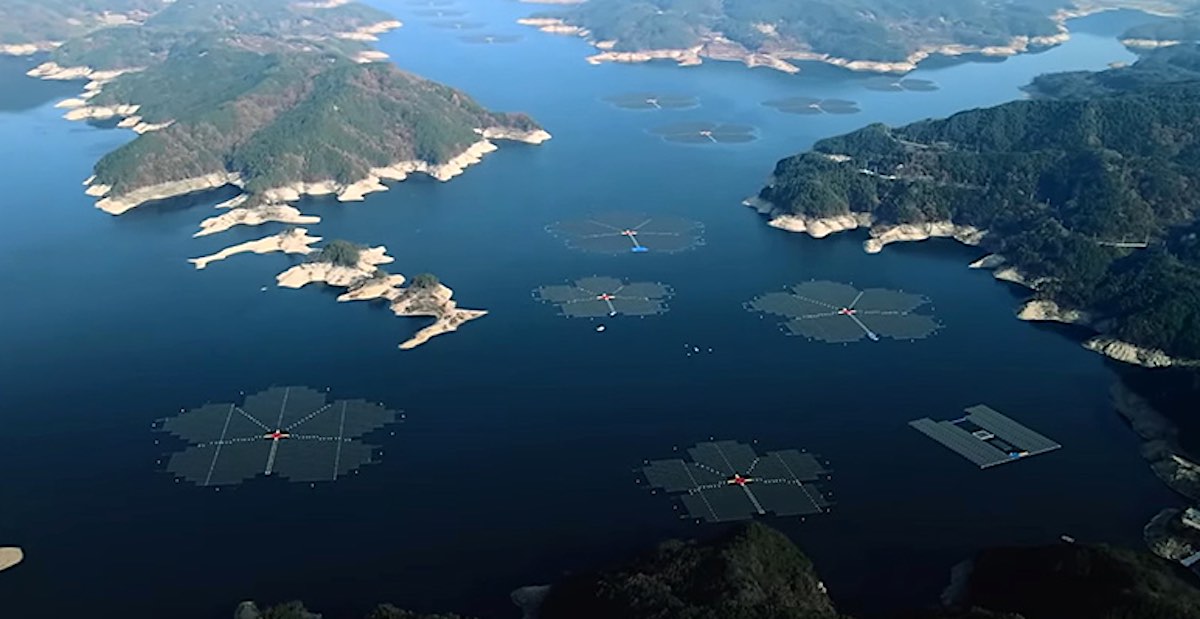South Korea’s total land surface is not large. Instead of clearing what little real estate there is for renewable energy projects, 92,000 solar panels in the shape of plum blossoms now float on the gently bobbing surface of a southern reservoir.
The solar project on the 17-mile-long reservoir in Hapcheon is able to generate 41.5 megawatts, enough to provide power for 60,000 people—more than the total population of the county.
Floating solar photovoltaic (PV) is becoming a go-to method of renewable energy production in Asia, and a recent speech by President Moon Jae-in outlined floating solar as an important part of a total-renewables plan for the generation of 9.4 gigawatts of electricity in South Korea, or about the same as nine nuclear reactors.
“The three peaks of Hwangmaesan Mountain reflected on Hapcheon Lake form the shape of a plum blossom. Sprawled on the surface of this lake are photovoltaic panels that also resemble plum blossoms from an ink-and-wash painting,” said President Moon.
MORE: California Erects Solar Panels Over Canal to Save Huge Supply of Water From Evaporation
Hanwa, the company in charge of constructing the blossom panel arrays, suggests that demand for floating PV is expected to rise in the coming years—not only in Asia. Thailand has already built the world’s largest floating PV solar panel plant, which is about the size of 70 soccer pitches.
Giant floating flowers made from solar panels will power 20,000 homes https://t.co/Y02SWHPwPw
— Bloomberg (@business) March 1, 2022
Pairing PV solar panels to water sources like canals, ground-level humidity, or reservoirs increases their efficiency by as much as 10%, as the surrounding water helps them remain naturally cooler. Bloomberg reports that they also help decrease hostile algae blooms.
RELATED: Solar Power Will Account for Nearly Half of New U.S. Electric Generating Capacity in 2022
$1.4 million, or around 4% of the total financing for the project, was fronted by Hapcheon locals. They were the first to be offered the chance at joining a 20-year, 10% annual return investment scheme, which should help generate useful income for elderly residents in an area where the average age is nearly 60.
(Featured photo by Republic of Korea Blue House / YouTube)
POWER UP the Good News; Share This Story…




















